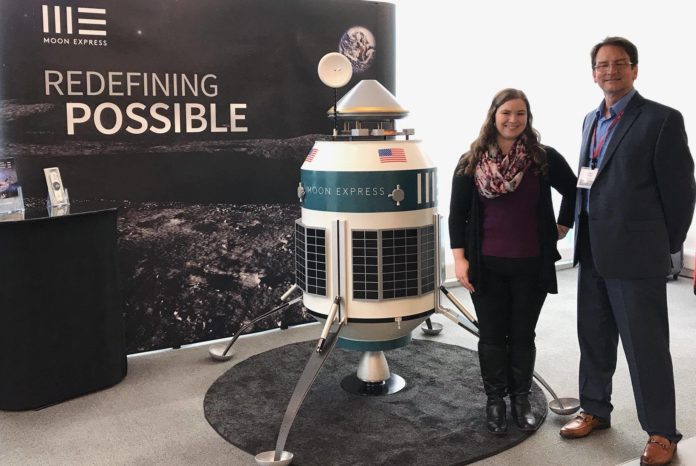
Olympia, we have a solution! To a problem that you probably were not even aware existed. But Washingtonian Vince Roux, lead researcher at Off Planet Research, was very conscious of the problem. He has been in the aerospace field for 32 years and the spacecraft field for 20 years. When he learned about the Google Lunar XPRIZE, he decided to go for it, but he needed to test his lunar rover.
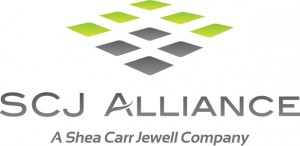 He learned there were no facilities that were “easily accessible” performing this specific kind of testing. In addition, Roux found there was no available lunar simulant in sufficient quantity or quality for his needs. So, he hatched a plan and decided to obtain his undergraduate degree in mechanical engineering at Saint Martin’s University to solve that problem. Together with his business partner and team of researchers, including fellow SMU mechanical engineer grad and lead researcher, Melissa Roth, they have done exactly that.
He learned there were no facilities that were “easily accessible” performing this specific kind of testing. In addition, Roux found there was no available lunar simulant in sufficient quantity or quality for his needs. So, he hatched a plan and decided to obtain his undergraduate degree in mechanical engineering at Saint Martin’s University to solve that problem. Together with his business partner and team of researchers, including fellow SMU mechanical engineer grad and lead researcher, Melissa Roth, they have done exactly that.
Off Planet Research, co-located at a lab on SMU grounds, is a for-profit service business producing simulated lunar soil and will have the capability for on-site testing of lunar prototypes in the future. The entire project has been funded by Roth and Roux, who firmly believe in what they are doing.
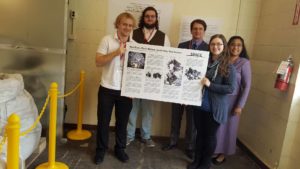
“Previously, NASA would send out a bid request for a couple tons of lunar simulant and whoever won the bid would have to create the simulant with a limited budget and limited time,” explains Roux. “They would do the best they could, but unfortunately the results are not all that great. It’s extremely difficult to make.” Since Off Planet Research was not constrained by a NASA budget or timeline, they could work on their own version of the simulant until they got it right.
You may be wondering why you need to test technology that is going to the moon. Aside from the reduced gravity and the extreme temperatures (Roux tells me it can get to -400 degrees, plus or minus), the soil up there is definitely not terrestrial. “Technology sent to the moon degrades very quickly and stops working because it’s such a harsh environment,” Roth explains. “Because there is no atmosphere, the particles in the soil are hit daily with micrometeorites. They strike the surface, heating up a ring, which then fuses them together, creating agglutinates. These are one of the components that make the soil different.”
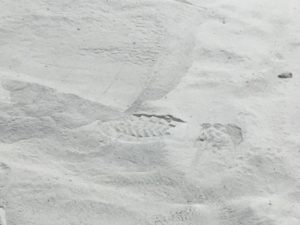
She adds that the other difference is no liquid water. “Earth particles are smooth and rounded, often from interaction with water. Everything on the moon is very angular and sharp.” These sharp particles are made from very strong minerals that cut right through terrestrial-grade equipment and tools.
As an example, Roux said it would be like sending your kid to play in a sandbox, but instead of soft sand, it is a patch of sand paper. The longest the Apollo missions could stay on the surface was three to four days, mainly because the equipment was breaking down so quickly.
Recreating the Moon
So how do you make lunar soil? It is not easy. “We’ve approached it as mechanical engineers from the idea of what the mechanical properties of the simulant are and how we can recreate those through a production process,” says Roth.
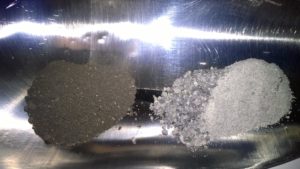
The moon has two main soil types that make up the highlands (light spots you see) and the lowlands (dark spots you see) on the moon. The lowland base is basalt, which is quite common on Earth and, therefore, is the soil that is usually reproduced by other groups that make lunar simulant. “The problem with that,” Roux explains, “is that the lowlands make up only 20 percent of the moon’s surface, so if you have a rover that you expect to wander the entire surface, you have no idea what the other 80 percent of the soil will do to it.”
To address this, Off Planet Research acquired Shawmere anorthosite for the highland soil. It is a rare substance, but they obtained 20 tons created by Avalon Advanced Materials.
They crushed the rock, blending it with other particles to create “moon rock.” To do this, they had to make what Roux calls “the most inefficient rock crusher on the planet.” Lunar soil has sharp edges, not anything smooth like what commercial crushers typically create, so they needed to recreate those jagged particles.
The end result is a product that, when compared to an x-ray of real lunar soil, is pretty close. “It was exciting to see it compared to real lunar soil and discover how similar it is,” says Roth.
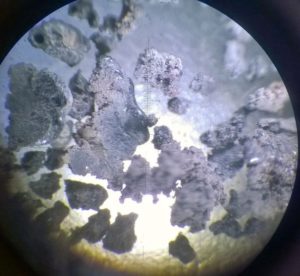
Contamination is a constant consideration, not just during the manufacturing process, but any time it is handled. “There is not a lot of simulant out there. What’s been happening is a party would buy a box of simulant, use it and then resell it when they were done testing,” explains Roux. “The problem with that is that chances are the simulant now has contaminants (i.e. terrestrial particles) in it.” A fragment fro the machinery, dirt from a shoe, dust, etc. can compromise the product.
To address this, Off Planet Research is not selling their simulant. Instead, they aim to rent it to parties looking to test space equipment. When it is returned, the team at Off Planet Research will thoroughly test the simulant for contaminants and either remove them or toss it if it is unsalvagable. “It’s really important for testing that the simulant remains constant throughout the research period, which could be several years,” explains Roth. “We are going to be able to switch out simulant for our clients if theirs gets contaminated while testing. That’s a big deal.”
“If a party tests with our simulant one year,” she continues, “and then comes back and wants simulant again for another test two years down the road, they will receive simulant with the exact same properties, so their research can be compared more accurately.”
Why Olympia?
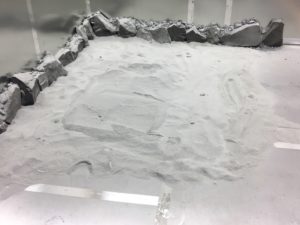
When asked why their base is in Thurston County Roux says, “The main reason is because we want to draw in the resources, talent and expertise that would normally settle at Kennedy Space Center or in Houston to Olympia, to use the lab so that local businesses and local students can benefit from it.” As a single father, Roux was unable to travel to participate in valuable internships during his training and he feels having a facility like this in Puget Sound is important for students who may have similar restrictions. “Not all of us can travel across the country, so we want to give students that opportunity here.”
There are a lot of companies locally that could benefit from Off Planet Research, not just aircraft companies like Boeing. “For example, a solar panel company,” says Roux. “In order to do anything on the moon, we will need solar panels. With a lab so close, those companies can design panels for space.” Roux adds there are 20 upcoming lunar missions planned and they already have parties interested in using their simulant for pre-testing.
Follow Roth and Roux’s progress on the Off Planet Research website or the Off Planet Research Facebook page.




















































